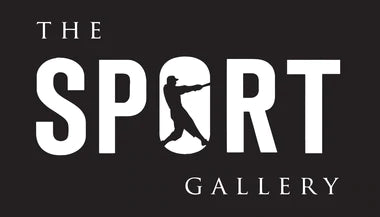The goalie mask revolution discussed in part one of this article was in many ways a precursor to a larger movement in the NHL towards player safety. By 1979, helmets were mandated for new players in the league. So to adhere to new safety standards, it was necessary for goalie masks to evolve as well. The early masks were often homemade, moulded from fibreglass, and held on the face with leather or fabric straps. They offered little to no protection to the back of the head.
During the 1972 Summit Series between Canada and the USSR, Russian net-minder Vladislav Tretiak wore a helmet with a cage attached to the front. This design became quite popular with many NHL goaltenders (notably Billy Smith of the New York Islander dynasty of the 1980s). This helmet and cage style of mask definitely provided better protection to the head, and vision compared with earlier goalie masks. However, this new style of mask took away the canvas which goalies had previously used to display their personalized artwork.
Fortunately, in the 1980s, yet another style of goalie mask emerged, a hybrid between the cage and the moulded fibreglass models. This hybrid mask was the best of all worlds, offering safety, visibility, and lots of blank space that could easily be decorated and customized. By the 1990s, and ever since, the vast majority of NHL goalies has favoured this style of mask. So let’s pick up where we left off, and take a look at the top masks from the '90s and beyond.
1990s: Curtis Joseph
Curtis Joseph's nickname and iconic mask were inspired by Cujo, the fierce dog from a Stephen King novel of the same name. This mask fits in the same tradition of intimidation which Gilles Gratton played into his mask. Joseph wore iterations of this design with each of the six teams he played for, and it evolved and modernized over the seasons. My favourite of the bunch is the original. It holds an unpolished rustic charm, reminiscent of a Sailor Jerry or Ed Hardy panther tattoo. The colour scheme definitely makes this mask design pop – I think it's the red of the tongue, balanced with the blue and gold of the rest of the Blues colour scheme. Without a doubt, when you mention Cujo, you've gotta talk about the mask.
2000s and Beyond: Steve Shields
Shield's throwback to Gerry Cheevers' "stitches" mask takes top spot in this category. Shields was the first to paint the hybrid mask with hair and ears to make it look like he was wearing an old-school moulded fibreglass mask. He is by no means alone in doing this, but as far as I can find, he was the first to do this, and chose a great goalie and mask innovator to honour with his bucket.
With the advent of Winter Classic and Heritage classic games, many goalies are choosing to honour goalies from their team's past by throwing back to their classic masks. Carey Price's Jacques Plante throwback, Martin Biron's take on Giles Gratton, and Roberto Luongo's adaptation of Curt Ridley's mask are among my favourites.
Honourable Mention: Alex Auld
Auldy gets the nod for a mask he wore in Montreal. When you play for the Habs you are automatically steeped in a rich tradition, and in 2010-11 (the year Auld spent in Montreal), Montreal was coming off the of celebration their 100th season in the NHL and were looking forward to a spot in the 2011 Heritage classic in Calgary. History was thick in the air, and Auld's two masks that year both payed homage to some great Montreal goalies of the past.
Auld's initial mask featured Montreal goaltending greats Patrick Roy, Ken Dryden, and Jaques Plante, as well as the old Montreal Forum, a wonderful nod to the rich history of the Habs. But the mask he debuted at the Heritage Classic did the same in a much more significant way to us at The SPORT Gallery.
One side of Auld's mask appears very simple – a recreation of Ken Dryden's mask from the 1970s updated for the modern hybrid mask design with subtle images of Dryden incorporated into the striping. On the other side of the mask the simple stripes disperse into celebratory banners, and above a large Canadiens logo. Above that sits an image that pays tribute to Jacques Plante, perhaps the quintessential image of Plante. The one that highlights his tenacity, ability, and contributions to the goaltending profession best of all. The image of Plante that first appeared in SPORT Magazine, the moment he donned the mask for the first time. The moment Jacques Plante became the icon.
To bring this look at goalie masks as pieces of artwork, we end where we began – with Jacques Plante and the image of him donning the mask for the first time. This photograph is a piece of art in its own right, and here it has been immortalized on Alex Auld's mask as a piece of wearable artwork, on the very piece of equipment and blank canvas that Plante pioneered.
***
Want more content? Check out our segment, The Art of Sport, on TSN Radio below!





